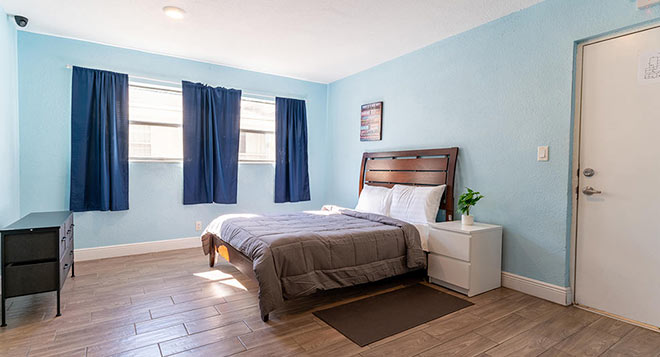What is Schizoaffective Disorder?
Schizoaffective disorder is a chronic mental health condition characterized primarily by symptoms of schizophrenia, such as hallucinations or delusions, and symptoms of a mood disorder, such as mania and depression. The disorder can be classified into two types: bipolar type, which includes episodes of mania and sometimes major depression, and depressive type, which only includes major depressive episodes.
What causes schzioaffective Disorder?
The exact cause of schizoaffective disorder is unknown, but it’s likely a combination of genetic factors, brain chemistry and structure, and environmental factors. Some people may have a genetic predisposition to developing the disorder, and certain brain chemicals, such as dopamine and serotonin, may also play a role. Stressful life events or exposure to drugs or alcohol during adolescence can also increase the risk.
What are the symptoms of Schizoaffective Disorder and how is it diagnosed?
Schizoaffective disorder symptoms may vary from person to person and can include, but are not limited to;
Hallucinations
such as hearing voices or seeing things that aren’t there.
Delusions
or false, fixed beliefs that are held regardless of contradictory evidence.
Depressed mood
feelings of sadness, emptiness, feelings of worthlessness or other symptoms of depression.
Manic behavior
which could be characterized by feelings of euphoria, racing thoughts, increased risky behavior, and other symptoms of mania.
Diagnosis of schizoaffective disorder involves ruling out other mental health disorders and determining that symptoms are not due to substance abuse, medication, or a medical condition. It also involves observing the presence of two or more core symptoms.
what triggers Schizoaffective Disorder?
The exact cause of schizophrenia isn’t known, but a combination of genetics, environment, and altered brain chemistry and structure may play a role.
Genetics
Having a close family member with schizoaffective disorder, schizophrenia, or another mood disorder can increase a person’s risk of developing schizoaffective disorder. This suggests a genetic component to the disorder, although the exact genes involved are not yet known.
Brain Chemistry and Structure
Abnormalities in the brain’s structure or in the balance of neurotransmitters (chemicals that transmit signals in the brain) may play a role in the development of schizoaffective disorder. For example, imbalances in neurotransmitters such as dopamine and serotonin could contribute to both the psychotic and mood symptoms of the disorder.
Stressful Life Events
Major stressors, such as the death of a loved one, loss of a job, or other traumatic events, can trigger the onset of schizoaffective disorder in people who are predisposed to it. These events can act as a catalyst, causing symptoms to appear for the first time or to worsen.
Drug or Alcohol Use
Substance abuse can trigger the onset of schizoaffective disorder symptoms, and can also exacerbate existing symptoms. Certain substances, such as hallucinogens or stimulants, can induce psychosis or mood disturbances that resemble the symptoms of schizoaffective disorder.
Physical Illness or Medication
Certain physical illnesses, particularly those that affect the brain, could potentially trigger schizoaffective disorder. Additionally, some medications, particularly those that affect brain chemistry, could potentially trigger the disorder in susceptible individuals.
What is the Difference Between Schizophrenia and Schizoaffective Disorder?
While schizoaffective disorder and schizophrenia share some similar symptoms, such as hallucinations and delusions, they are distinct conditions. The key difference is that people with schizoaffective disorder also experience symptoms of a mood disorder, such as mania or depression.
This is not a characteristic of schizophrenia. Additionally, the course of schizoaffective disorder can be different from that of schizophrenia, with some people experiencing periods of relatively normal mood and functioning.
What sets apart Schizophrenia and Schizoaffective Disorder in terms of symptoms?
How do the diagnostic criteria differ between these conditions?
Schizophrenia diagnosis requires two or more symptoms (hallucinations, delusions, disorganized speech, disorganized behavior, negative symptoms) for a month. Schizoaffective Disorder diagnosis mandates a major mood episode alongside core schizophrenia symptoms for two weeks, with delusions or hallucinations present most of the time.
How do treatment approaches vary for Schizophrenia and Schizoaffective Disorder?
Both are treated with antipsychotics, therapy, and psychosocial interventions. Schizoaffective Disorder may need mood stabilizers or antidepressants for mood symptoms, making treatment planning more intricate.
What's the long-term outlook for Schizophrenia versus Schizoaffective Disorder?
Schizophrenia’s prognosis varies; some manage well with treatment, while others face persistent symptoms. Schizoaffective Disorder’s outcome depends on mood disorder management. Co-existing psychotic and mood symptoms present challenges.
Is Schizoaffective Disorder a Disability?
Schizoaffective disorder is considered a disability under the Social Security Administration’s guidelines. This means that individuals with the disorder may be eligible for Social Security Disability benefits if the disorder significantly impairs their ability to work. It’s important to note that eligibility for disability benefits is determined on a case-by-case basis, and not everyone with schizoaffective disorder will qualify.
Does Schizoaffective Disorder Get Worse with Age?
The progression of schizoaffective disorder with age is not clearly understood or pinpointed.
The severity of symptoms can fluctuate over time, with periods of remission alternating with more serious and disabling episodes.
It’s important to note that schizoaffective disorder is considered a lifelong, chronic condition with no cure, and there is always a possibility of symptoms or mood episodes.
As with many mental health conditions, the management and treatment of schizoaffective disorder are crucial for maintaining stability and improving quality of life.

Treatment for Schizoaffective Disorder
Navigating life with schizoaffective disorder can often feel overwhelming, but you don’t have to face it alone.
At Still Mind Mental Health, we specialize in understanding the intricacies of schizoaffective disorder, offering a holistic approach to treatment that addresses both the emotional and cognitive challenges.
Is Someone with Schizoaffective Disorder Dangerous?
People with schizoaffective disorder are not considered dangerous.
While some people with the disorder may experience symptoms that can lead to unpredictable behavior.
People with schizoaffective disorder are more likely to be victims of violence than perpetrators.
Schizoaffective disorder complications
According to The National Library of Medicine;
Left untreated, schizoaffective disorder has many ramifications in both social functioning and activities of daily living. These include unemployment, isolation, impaired ability to care for self, etc.
Untreated mental disorders have more than just social and functional consequences.
Some studies show that as many as 5% of people with a psychotic illness will commit suicide over their lifetime. Research has shown that among all completed suicides, ten percent are attributable to those with a psychotic illness.
What is Schizoaffective Disorder Bipolar Type?
Schizoaffective disorder bipolar type is a subtype of schizoaffective disorder. Individuals with this condition experience episodes of mania and sometimes major depression, in addition to symptoms of schizophrenia such as hallucinations or delusions. The exact cause of schizoaffective disorder bipolar type is unknown, but it’s likely a combination of genetic and environmental factors.
What are the layers of Schizoaffective disorder?
Schizoaffective disorder is a complex mental health condition that involves symptoms of both a mood disorder and schizophrenia. The “layers” of schizoaffective disorder can be thought of as the different categories of symptoms that a person with the disorder may experience. These layers often interact and influence each other, adding to the complexity of the condition.
Psychotic Symptoms
These are symptoms typically associated with schizophrenia and may include delusions, hallucinations, disorganized thinking, and negative symptoms such as diminished emotional expression or avolition (lack of motivation to engage in activities).
Mood Disorder Symptoms
These are symptoms of a mood disorder, either bipolar disorder or depression. In the bipolar type, a person may experience episodes of mania (periods of high energy, reduced need for sleep, and increased activity) and possibly also episodes of depression. In the depressive type, a person experiences episodes of major depression.
Cognitive Symptoms
Many people with schizoaffective disorder experience cognitive difficulties, such as problems with memory, attention, and executive functions (like planning and problem-solving). These symptoms can affect a person’s ability to function in daily life.
Physical Health Issues
People with schizoaffective disorder often have co-occurring physical health issues, such as heart disease, diabetes, or substance use disorders. These can complicate the treatment of schizoaffective disorder and may also be influenced by the symptoms of the disorder.
Social and Occupational Functioning Issues
The symptoms of schizoaffective disorder can cause significant difficulties in social and occupational functioning. This can include problems maintaining relationships, fulfilling work responsibilities, or carrying out daily living tasks.
Each of these layers can influence and exacerbate the others, creating a complex interplay of symptoms that can make schizoaffective disorder challenging to treat. However, with appropriate treatment, many people with schizoaffective disorder are able to manage their symptoms and lead fulfilling lives.
borderline personality disorder treatments
What are the effective treatment options for Schizoaffective disorder?
Medications
Antipsychotics
These are used to manage the symptoms of psychosis such as hallucinations, delusions, and disorganized thinking. Examples include risperidone (Risperdal), olanzapine (Zyprexa), and aripiprazole (Abilify).
Mood stabilizers
For those with bipolar type schizoaffective disorder, mood stabilizers such as lithium or valproate can be helpful in managing mood swings.
Antidepressants
These can be used to treat symptoms of depression in both the depressive and bipolar types of schizoaffective disorder.
Antianxiety medications
These can help with symptoms of anxiety that often accompany this disorder.
Psychotherapy
Cognitive-behavioral therapy (CBT)
This type of therapy can help individuals challenge and change thought patterns leading to harmful behaviors or feelings.
Family or group therapy
This can provide support and education to families and individuals, helping them understand and manage the disorder.
Psychoeducation
This involves teaching individuals about their disorder, treatments, and strategies for managing symptoms, which can empower them and promote adherence to treatment.
Social Support and Rehabilitation
Supported employment and education programs
These can help individuals with schizoaffective disorder achieve their academic and vocational goals.
Social skills training
This can help improve communication and social interactions.
Residential treatment programs
These provide structured treatment environments that offer therapy, support, and education
Lifestyle Changes
Hospitalizations
Hospitalization can be a necessary part of treatment for schizoaffective disorder, particularly during severe episodes of psychosis, mania, or depression, or if the individual is at risk of harming themselves or others.
Schizoaffective disorder treatment in fort lauderdale florida
Healing from Within: Still Mind, Your Path to Mental Wellness
What are the long-term effects of Schizoaffective Disorder?
Schizoaffective disorder is a chronic mental health condition, and it can have several long-term effects if not properly managed. These effects can vary widely from person to person, depending on the severity of the disorder, the effectiveness of treatment, and the individual’s overall health and lifestyle.
Psychological Effects
Individuals with schizoaffective disorder may experience ongoing symptoms of psychosis and mood disturbances, such as hallucinations, delusions, depression, and mania. These symptoms can cause significant distress and can interfere with the individual’s ability to function in daily life.
Social Effects
The symptoms of schizoaffective disorder can make it difficult for individuals to maintain relationships, hold down a job, or engage in social activities. This can lead to isolation, unemployment, and a reduced quality of life.
Physical Health Effects
Individuals with schizoaffective disorder often have co-occurring physical health issues. These can be related to the disorder itself, the side effects of medication, or lifestyle factors. Common physical health issues include weight gain, metabolic syndrome, and cardiovascular disease.
Cognitive Effects
Some individuals with schizoaffective disorder may experience cognitive impairments, such as difficulties with memory, attention, and executive functioning. These cognitive effects can make it challenging to carry out daily tasks and can impact educational and occupational achievement.
Increased Risk of Suicide
Individuals with schizoaffective disorder have a higher risk of suicide compared to the general population. This risk is particularly high during depressive or mixed episodes and requires immediate medical attention.
Substance Use Disorders
Some people with schizoaffective disorder may turn to alcohol or drugs to self-medicate their symptoms, leading to substance use disorders. This can exacerbate the symptoms of schizoaffective disorder and complicate treatment.
Schizoaffective Disorder treatment at Still Mind Florida
People with schizoaffective disorder may have additional mental health conditions, such as:
- Anxiety disorders
- Post-traumatic stress disorder (PTSD)
- Dissociative disorders
- Co-occurring substance use disorder
- Moderate to severe depression
In our schizoaffective disorder treatment program at Still Mind, we believe mental health concerns can also be addressed. We offer a wide range of mental health therapies to support our patients, like:
- Cognitive-Behavioral Therapy (CBT)
- Dialectical Behavior Therapy (DBT)
- EMDR Therapy
- Meditative Therapy
- Mindfulness Meditation Therapy
- Moral Reconation Therapy
- Motivational Enhancement Therapy
- Motivational Interviewing
- Music Therapy
- Trauma Therapy
These therapies help clients identify, address, and heal from all their mental health concerns.










